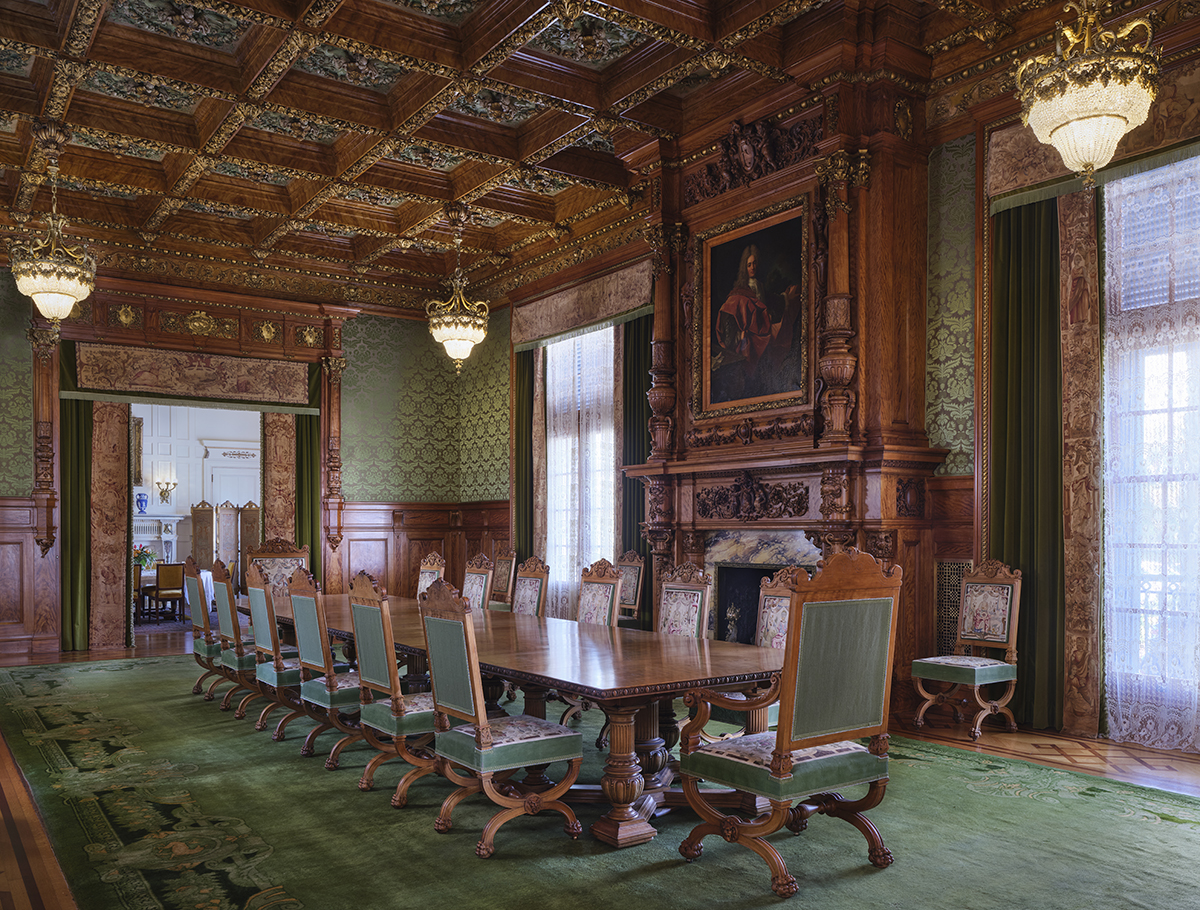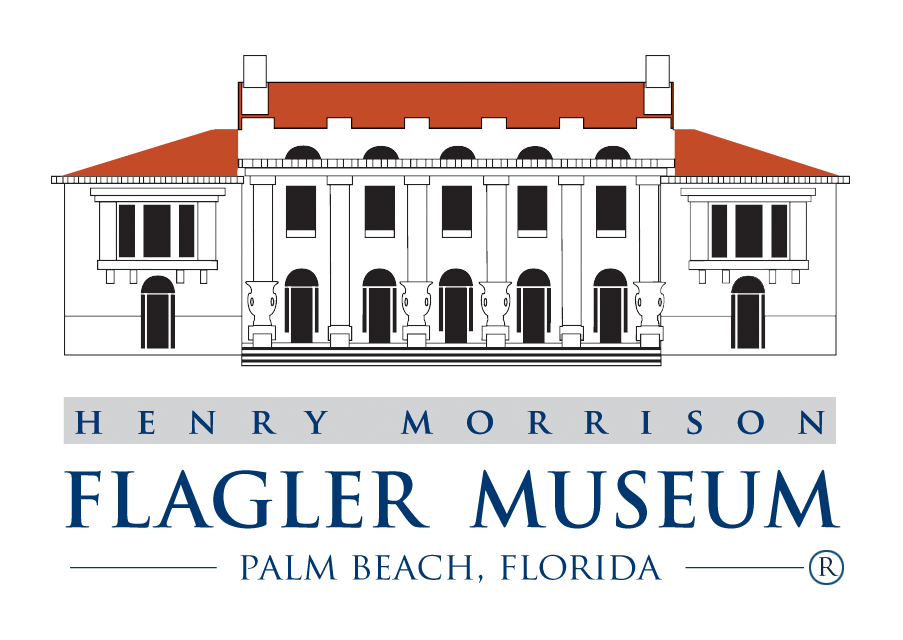Dining Room

The Dining Room was designed in the French Renaissance style. The Flaglers entertained large parties in this room for lengthy, elegant dinners. Flagler sometimes held dinners in the Dining Room for his male associates, hosting prominent men from financial, literary, and legal circles.
The rug was specially woven for the room and is recessed into the parquet floor. The wall coverings are green silk, reproductions of the original fabric. Like the Library, the Dining Room ceiling is cast plaster painted to look like wood. Inset into the "wooden" beams are rosettes incorporating romanticized dolphin creatures. One of the room's most prominent features, the fireplace mantle, incorporates elaborately carved culinary references such as shells, crabs, and fruit.
In August 2024, the Flagler Museum undertook an elaborate restoration of Whitehall’s formal Dining Room. When first installed in 1902, the renowned design firm Pottier and Stymus created the Dining Room using incredibly rare Jamaican Satinwood, a material that is now nearly extinct. There has never been another Satinwood room built that compares to Whitehall’s Dining Room in terms of size, quality, or elaborate decoration, and there never will be. The Dining Room represents a unique moment in history, showcasing the technology, availability of the wood, and wealth that existed in America at that time to make such a magnificent room possible.
The 1902 photographs of the Dining Room in the Flagler Museum Archives show the furniture and woodwork in a harmonious transparent finish that highlighted the impressive feature of the Satinwood that gives it its name. Additionally, the photos reveal faux-painted gilt friezes and ceiling beams simulating Satinwood, adding to the room’s cohesive aesthetic. Jamaican Satinwood, now commercially unavailable, was a highly coveted cabinet wood when it first appeared regularly in Europe, Great Britain, and the American East Coast in the late eighteenth century. Due to its limited geographic distribution and medium size, Satinwood was never as abundantly produced as other tropical hardwoods like mahogany or rosewood. In the eighteenth and early nineteenth centuries, it was often used in small quantities as veneer, marquetry, or a light-colored contrast in darker primary wood pieces. Entire furniture pieces made from Satinwood were rare, making Whitehall’s Dining Room, made of solid Satinwood, the largest and most elaborate Satinwood room ever built in the Western Hemisphere and probably the world.
The restoration of the Dining Room was generously underwritten by Thomas S. Kenan, III, and The Stockman Family Foundation.







